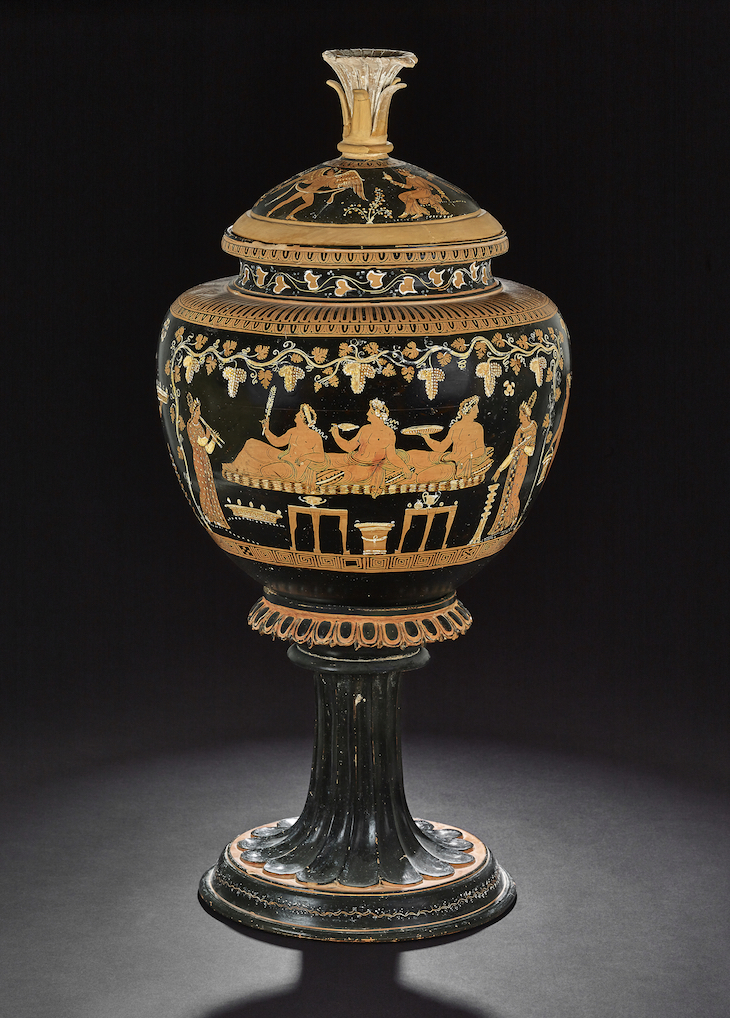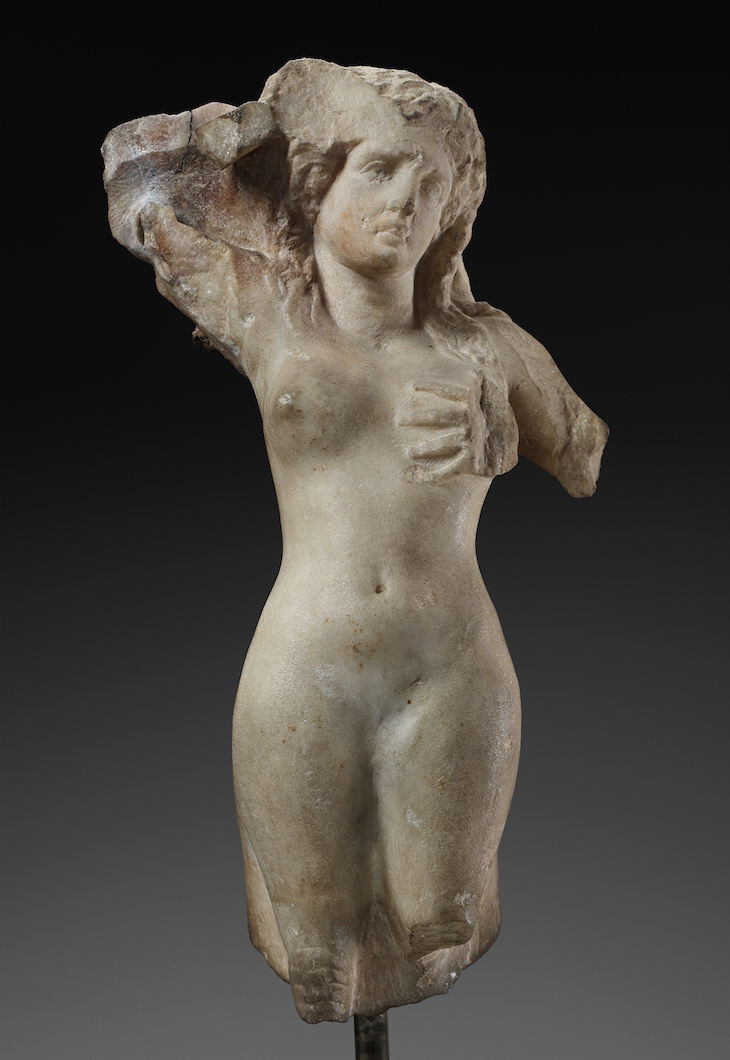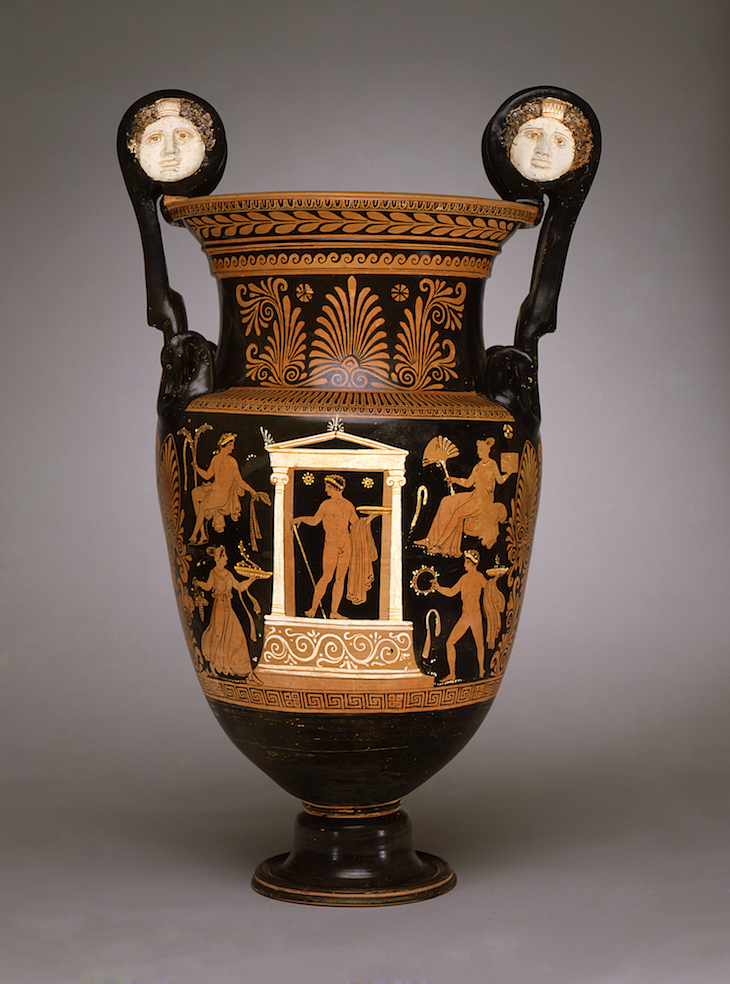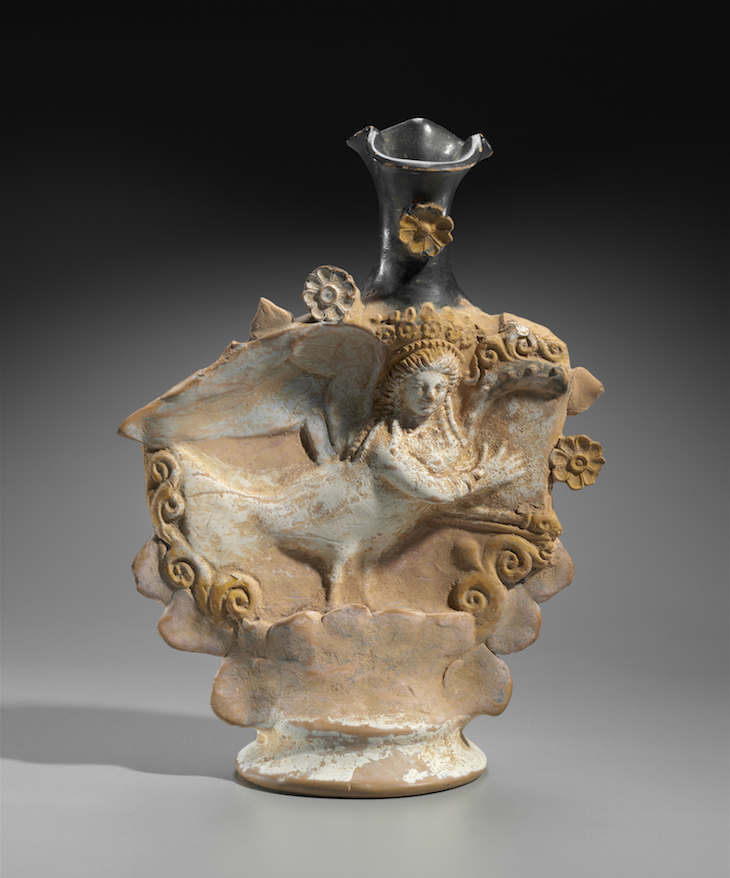A rare loan of a monumental funerary vessel, or krater, from the National Archaelogical Museum in Naples is the occasion for this exhibition about ancient Greek beliefs about the afterlife. The krater, made in Apulia in the 4th century BC, depicts an underworld populated with figures including Hades and Persephone, god and goddess of the underworld; the demi-god Herakles; and the doomed villain, Sisyphus. Around 35 other objects from the ancient world will look at Greek myths regarding the afterlife, as well as the ways in which real people sought to improve their lot in the next world. Find out more about the ‘Underworld’ exhibition from the Getty Villa’s website.
Preview the exhibition below | See Apollo’s Picks of the Week here

Red-figure dinos with sympiosasts (360–340 BC), attributed as close to H.A. Painter and Varrese Painter, Greek (South Italian, Apulian). Photo: © The Trustees of the British Museum

Weeping Siren (c. 350–25 BC), Greek. Photo: © 2018 Museum of Fine Arts, Boston

Volute Krater (c. 340–30 BC), attributed to the Darius Painter (Greek). Toledo Museum of Art

Oil flask (lekythos) with figure of a Siren at front (late 5th–early 4th century BC), Greek. Photo: © 2018 Museum of Fine Arts, Boston











![Masterpiece [Re]discovery 2022. Photo: Ben Fisher Photography, courtesy of Masterpiece London](http://www.apollo-magazine.com/wp-content/uploads/2022/07/MPL2022_4263.jpg)
The threat to Sudan’s cultural heritage